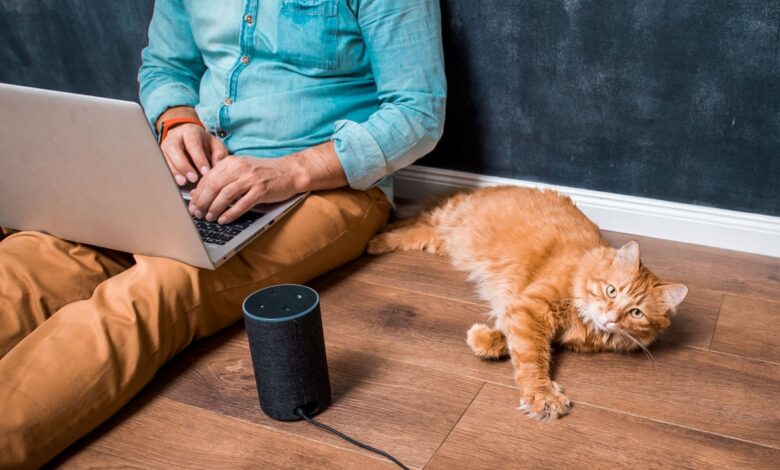When Will Amazon Start the AI Conversation?

Someday — and it may be soon — conversations with Amazon’s automated voice assistant Alexa may cost money. Amazon has been clear about its intentions to charge a subscription for a tiered Alexa service since last September. But improvements to voice technology driven by artificial intelligence (AI) may force the issue.
As an Amazon spokesperson confirmed to PYMNTS Wednesday (May 22), that integrating generative AI into Alexa is in development, and was mentioned by CEO Andy Jassy in his most recent shareholder letter in which he referenced AI as part of “dozens” of potential applications including an “even more intelligent and capable Alexa.” Other company executives — past and present — have been on the record about the improvements AI can bring to the technology as well as the costs it will add to production.
“But before we would start charging customers for this — and I believe we will — it has to be remarkable,” David Limp, the former Amazon executive in charge of Alexa, told Bloomberg in September 2023. “It has to prove the utility that you’re coming to expect from the “superhuman” assistant. I can paint a line from where we’re going to be right now, which we’re not going to charge for, to something that will have so much utility for every member of the household. We don’t have an idea of a price yet. We’ll talk to customers and learn from them, what they believe the value is.”
When will that happen? More recent reports put the debut of Alexa Plus by the end of the year, but there is no more specific information. The only Alexa application currently under a subscription model is Alexa Together, which was developed for elderly care and connectivity among family caregivers. However, the company recently announced that it will not be supported after June 25.
Using AI to power voice commerce and intelligent conversations was a development predicted by PYMNTS CEO Karen Webster as early as April 2023. In a column she wrote at that time, she predicted that technology would integrate voice and enable commerce from any connected device, positioning voice to be a dominant means of interactions and transactions. And she noted, research from PYMNTS Intelligence that showed nearly 30% of U.S. consumers at that time would pay a monthly fee to access a voice assistant that can handle complex commands and commerce. Not to mention her predictions about AI.
“Artificial intelligence will make voice interactions smart, personalized, adaptive and engaging,” she wrote. “As in truly engaging — conversational in every sense of the word. Not just reactive to a wake word and a series of prompts, but proactive and intuitive, anticipating actions based on history and context and anticipating what consumers might want to do next, just like an effective, smart, capable human assistant would do.”
According to a September 2023 blog post, the new Alexa might have been listening. It will be based on a new large language model (LLM) that’s been custom-built for voice interactions and aimed at getting real-time information, efficient smart home control, and maximizing home entertainment. The post sets out five foundational capabilities: conversation, real-world utilities like smart home commands, personalization, personality and trust.
The emergence of AI, along with sophisticated chatbots and voice functionalities, is transforming the landscape of digital assistants at a time when consumers increasingly rely on technology to manage various daily tasks.
According to PYMNTS Intelligence, consumers devote 26% of their weekday time and 28% of their weekend time to multitasking. While one might typically associate the integration of digital technology with activities like online shopping — which accounts for only about a quarter of multitasking time — the rest is spent managing work-related tasks, home upkeep, and staying in touch with family members, among others.
In the April 2023 study titled “How Consumers Want to Live in the Voice Economy,” PYMNTS Intelligence discovered that consumers are eager to streamline their daily routines using smart, simple and more interconnected solutions. Hands-free voice technologies are increasingly popular for tasks such as retrieving information, voice identification, or booking flights. On average, consumers engaged in six different tasks using voice technology over the past year.
The data also highlights a growing preference for voice-driven interfaces, with 54% of surveyed consumers indicating they would choose voice technology in the future for its speed over traditional typing or touch interactions.
For all PYMNTS AI coverage, subscribe to the daily AI Newsletter.



